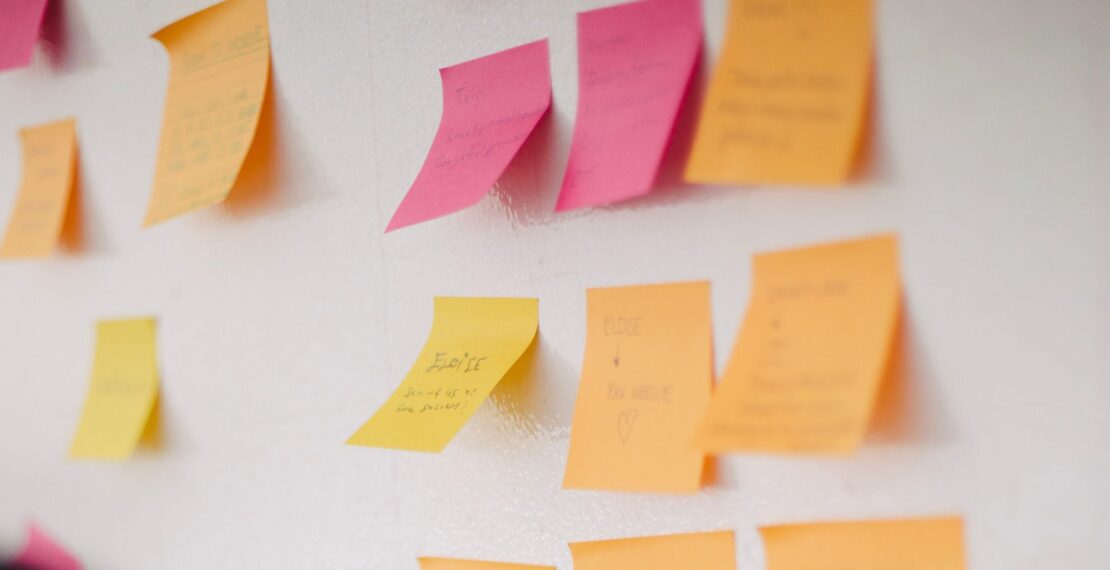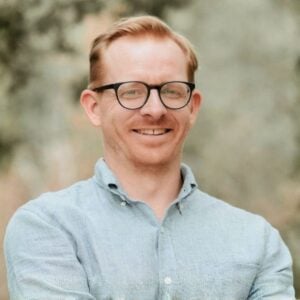Adapted from Chapter 10 of the Psychedelic Explorer’s Guide by Jim Fadiman
We currently find ourselves in the Third Wave of psychedelic use.
The first wave was the use of psychedelics in shamanistic rituals, and the second wave was the use of psychedelics in the 1960s and 70s.
This third wave of psychedelic research builds on the aims of psychedelic research carried out in the 1960s.
As outlined in the Psychedelic Explorer’s Guide, the third phase focused on one question:
How can we produce a particular type of psychedelic experience with individual goals or aims in mind?
The first phase of psychedelic research, prior to the 60s, identified psychedelic substances as causing a psychotic state. Various researchers reported that psychedelic-induced states imitated mental illness when given in a setting that provoked it. Such observations led to the overwhelming emphasis on the importance of Set and Setting.
The second phase eliminated the bias of the therapist’s or monitor’s conceptions and interpretations. Research led to various psychotherapeutic applications as well as “widespread – mainly illicit – use oriented to sensual, philosophical, and transcendental goals” (as per the Psychedelic Explorer’s Guide).
Based on clinical research in the first and second phases, psychedelics were thought to have the capability to improve long-term performance in various areas.
Though not purposefully sought, there were several spontaneous incidents of enhanced performance during the drug experience itself. Examples range from improved athletic performance to creativity enhancement to increased sociability.
Such observations lead to one conclusion:
Humans do not function at full capacity unless there is a catalyst or instigator.
Psychedelics inhibit censors that usually limit what is available to conscious awareness.
Although psychedelics are notorious in popular media and mainstream belief for having no utility whatsoever, it started to appear as if psychedelics could be used to enhance creative problem-solving
In the 1960s, when LSD research was still legal, there were numerous studies carried out to test the efficacy of psychedelics on creative problem-solving.
One study, sponsored by the Institute for Psychedelic Research at San Francisco State University in 1966, dug into three questions:
- Can psychedelics enhance creative problem-solving ability, and if so, what is the concrete evidence of enhancement?
- Can this increase lead to practical, valid, and feasible solutions assessable by the pragmatic criteria of modern industry and mainstream science?
- In working with creative individuals, would there be changes indicative of increased creativity continuing after psychedelic intervention?
Twenty-six men took part in the study. They came from a range of professional occupations, including science, engineering, art, psychology, and business. In the 1960s, when the study occurred, few women occupied senior scientific positions, and none of them wished to participate.
Only seven of the participants (27%) had previous experience with psychedelics. Each subject met the following criteria:
- The participant’s occupation required problem-solving ability
- The participant was psychologically stable, as determined by a psychiatric interview examination.
- The participant was motivated to discover, verify, and apply solutions to his current professional pursuits.
In the initial meeting with the participants, the researchers did their best to create an atmosphere of understanding and rapport amongst the members and staff. Also, various suggestions were given to the participants:
- “Try to identify with the central person, object, or process in the center of the problem. See how the problem looks from this vantage point.”
- “Try to ‘see’ the solution—to visualize how various parts might work together, how a certain situation will work out.”
- “Scan rapidly through a large number of possible solutions, ideas, and data. The “right” solution will often appear with a sort of intuitive “knowing” that it is the answer.”
- “You will also find that you can be simultaneously aware of an uncommonly large number of ideas or pieces of data processes simultaneously.”
- “You will be able to step back from the problem and see it in a new perspective, in more basic terms.”
- “Since there is much less of yourself invested than in your prior trials, you will be able to abandon previously tried approaches and start afresh.”
- “Above all, don’t be timid about asking for answers. If you want to see the solution in a three-dimensional image, or to project yourself forward in time, or to view some microscopic physical process or something not visible to the physical eye, or to re-experience some event out of the past, by all means, do so. Ask. Don’t let your questions be limited by your notion of what can or cannot be done.”
DAY OF THE SESSION
The day of the experimental session began at 8:30.
The subjects arrived at the session room by 9:00 and ingested the psychedelic: 200 milligrams of mescaline, equivalent to 100 micrograms of LSD.
From 9:00–12:00 music played while subjects relaxed with their eyes closed. From 12:00–1:00, subjects underwent extensive psychological testing.
And, from 1:00–5:00 participants worked on problems. Afterward, the subjects discussed the experience and reviewed possible solutions.
Based on the post-experience reports, the researchers extracted eleven types of improved functioning that occurred during the session:
LOW INHIBITION AND ANXIETY
“There was no fear, no worry, no sense of reputation and competition, no envy, none of these things which in varying degrees have always been present in my work.”
“You will also find that you can be simultaneously aware of an uncommonly large number of ideas or pieces of data processes simultaneously.”
CAPACITY TO RESTRUCTURE PROBLEM IN A LARGER CONTEXT
“Normally I would overlook many more trivial points for the sake of expediency, but under the drug, time seemed unimportant. I faced every possible questionable issue square in the face.”
ENHANCED FLUENCY AND FLEXIBILITY OF IDEATION
“I was very impressed with the ease with which ideas appeared (it was virtually as if the world is made of ideas, and so it is only necessary to examine any part of the world to get an idea). I also got the feeling that creativity is an active process in which you limit yourself and have an objective, so there is a focus about which ideas can cluster and relate.”
HEIGHTENED CAPACITY FOR VISUAL IMAGERY AND FANTASY
“As soon as I began to visualize the problem, one possibility immediately occurred. A few problems with that concept occurred, which seemed to solve themselves rather quickly…. Visualizing the required cross section was instantaneous.”
INCREASED ABILITY TO CONCENTRATE
“I was easily able to follow a train of thought to a conclusion where normally I would have been distracted many times.”
HEIGHTENED EMPATHY WITH EXTERNAL PROCESSES AND OBJECTS
“Ability to grasp the problem in its entirety, to ‘dive’ into it without reservations, almost like becoming the problem.”
HEIGHTENED EMPATHY WITH PEOPLE
“Sometimes we even had the feeling of having the same thoughts or ideas.”
SUBCONSCIOUS DATA MORE ACCESSIBLE
“I was in my early teens and wandering through the gardens where I actually grew up. I felt all my prior emotions in relation to my surroundings.”
ASSOCIATION OF DISSIMILAR IDEAS
“It was the last idea that I thought was remarkable because of the way in which it developed. This idea was the result of a fantasy that occurred during Wagner…. [The participant had earlier listened to Wagner’s ‘Ride of the Valkyries.’] I put down a line which seemed to embody this…. I later made the handle which my sketches suggested and it had exactly the quality I was looking for…. I was very amused at the ease with which all of this was done.”
HEIGHTENED MOTIVATION TO OBTAIN CLOSURE
“All known constraints about the problem were simultaneously imposed as I hunted for possible solutions. It was like an analog computer whose output could not deviate from what was desired and whose input was continually perturbed with the inclination toward achieving the output.”
VISUALIZING THE COMPLETED SOLUTION
“I visualized the result I wanted and subsequently brought the variables into play which could bring that result about. I had great visual (mental) perceptibility; I could imagine what was wanted, needed, or not possible with almost no effort. I was amazed at my idealism, my visual perception, and the rapidity with which I could operate.”
PRACTICAL APPLICATION
All of this sounds great, of course, but one question has yet to be answered:
Did the subjects obtain any practical value from the experiment?
In other words, did they take the various ideas from this focused psychedelic session and create marketable, sellable products?
The answer is yes.
In fact, the nature of these solutions covered a broad spectrum:
- A new approach to the design of a vibratory microtome
- A commercial building design, accepted by the client
- Space-probe experiments devised to measure solar properties
- Design of a linear electron accelerator beam-steering device
- An engineering improvement to a magnetic tape recorder
- A chair design modelled and accepted by the manufacturer
- A letterhead design approved by the customer
- A mathematical theorem regarding NOR-gate circuits
- Completion of a furniture-line design
- A new conceptual model of a photon found to be useful
- The design of a private dwelling approved by the client
So, How Can You Utilize Psychedelics For Problem Solving?
Now you may be wondering: if psychedelics have such an amazing potential to help us innovate and solve problems, why isn’t everyone using them?
The answer is that psychedelics have been demonized and stigmatized since the beginning of Nixon’s war on drugs: you can read more about that topic here.
But now psychedelics are beginning to once again emerge into mainstream society, it’s our chance to make the most of them.
We offer an extensive microdosing course which will teach you how to most effectively utilize psychedelics for creative problem solving. Our course contains expert interviews, practical resources, and access to a community of experienced microdosers. This is the best place to start for anyone wishing to enter the world of psychedelics.
Once you’re more familiar with the microdosing method, consider signing up to our Synthesis retreat: a 3-day long psychedelic workshop in Amsterdam that aims to catalyze a creative breakthrough, and help you take that next big ‘leap’ in life.
The time is here for psychedelics to become the breakthrough new catalyst for creativity and change in our society. Join the movement and become a part of Third Wave!
If you want to find out more about the topic check out our podcast interview with Nik Vassev where we talk about Building a Meta-Modern Matrix: A New Take on Capitalism and Consciousness or Click here to read the transcript






